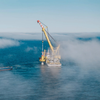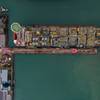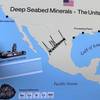Mitsui O.S.K. Lines (MOL) has announced a joint success with Japan Radio and JSAT MOBILE Communications in building a network that shares data recorded in Voyage Data Recorder (VDR) by using Fleet Xpress provided by Inmarsat, a high-capacity, high-speed satellite telecommunication service.
Like the flight data and cockpit voice recorders on airplanes, VDR records data on vessel movement (position, navigation speed, main engine rpm, and so on), voice communication on the bridge, image data on nautical instruments such as radar, and the Electronic Chart Display and Information System (ECDIS).
An international treaty mandates that large-scale vessels and passenger ships that ply international waters be equipped with VDR, in order to analyze and identify the background and causes of marine incidents, based on data collected by the VDR prior to such incidents.
Conventionally, VDR data was accumulated in its main unit onboard, so the data had to be stored in secondary storage such as hard disk drive and mailed to offices on shore.
This meant shore-side personnel could not access this data during the voyage. And varying postal systems at ports around the world made it difficult to get data on a timely basis.
MOL conducted the test with one of its operated vessels, and confirmed the following.
1. Real-time monitoring on shore: The network can receive and monitor VDR-collected information related to various nautical instruments and the main engine of the vessel, and determine the movement of the vessel on the nautical chart by transferring the data to ECDIS.
2. Shorter, swifter transmission of VDR data to shore: Past data recorded on VDR can be acquired ashore whenever needed by using satellite telecommunications.
Determining the current navigation status of the vessel allows deeper support from ashore, which in turn enhances operating safety.
In case of an emergency or a marine incident, the data on the vessel's movement from the time the incident occurred can be reproduced in the land-based ECDIS, and voice transmissions and radar images can be confirmed.
The information can be provided to concerned parties swiftly and accurately, in an environment that allows for immediate grasp of the sequence of events related to the incident. This also allows the cause of the incident to be determined more quickly.
MOL positions this success as a major step toward future remote vessel operation technology, having set its sights on expanding its use to every MOL-operated vessel, and continues research aimed at refining the concept of "visualization at sea."
MOL continues to promote advanced support of safe operation and environment-friendly services, which are states in the "ISHIN NEXT - MOL SMART SHIP PROJECT -," announced in November 2016. MOL also aims to be the first company that comes to mind when customers are looking for a logistics business partner that fully utilizes ICT technology.











